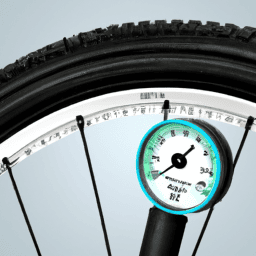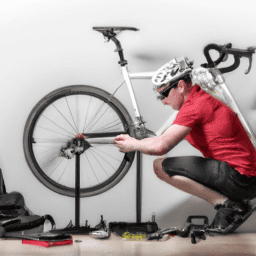Do you want to find a new home for an old bike that’s been sitting unused in your garage? Giving it to a local charity is an excellent means to breathe new life into it and assist someone who could really use it. However, with numerous choices out there, figuring out where to begin can be a daunting task.
In this article, we’ll explore some of the best places to donate bicycles, from local non-profits to online marketplaces. Local non-profit organizations are a popular choice for bike donations, as they often have programs that aim to provide bikes to low-income families, refugees, and other disadvantaged individuals. Many of these organizations offer free pick-up services, making it easy for you to donate your bike without having to transport it yourself.
National charities, such as Goodwill and the Salvation Army, also accept bicycle donations and may have locations in your area. In the next section, we’ll take a closer look at some of the best places to donate your bicycle and how to get started.
Key Takeaways
- Donating a bike can help those in need, promote cycling culture, make a global impact, and provide access to sustainable transportation.
- There are various ways to donate bikes, including donating to local non-profit organizations, national charities, bike co-ops, and community bike programs.
- It is important to research organizations before donating to ensure that they align with your values and goals.
- Supporting cycling can also involve joining local groups, advocating for better city infrastructure, and promoting sustainable transportation.
Local Non-Profit Organizations
You can easily donate your bicycle to a local non-profit organization near you! Many non-profits have bike recycling programs that take in donations of old or unused bicycles. These programs work to refurbish and redistribute the bikes to people who need them, such as low-income families or individuals who rely on bikes for transportation.
Another option is to donate your bicycle to a bike co-op in your area. These organizations are typically run by volunteers and work to promote cycling culture in the community. They often offer repair services and education on bike maintenance, and donations of bikes help them continue their work.
By donating your bike to a local non-profit or bike co-op, you can help support your community and give your old bike a second life. If you’re interested in donating to a national charity, there are also many organizations that accept bike donations.
National Charities
There’s nothing quite like the feeling of giving back, and supporting national charities is a great way to make a positive impact in your community. When it comes to donating bicycles, many national charities accept them. However, it’s important to follow their bicycle donation guidelines to ensure that your donation can be put to good use.
Bicycle donations can make a significant impact on national charities, as they can be used to support various programs such as transportation for individuals in need, youth development programs, and fundraising events. Some national charities, such as Bikes for the World, even ship donated bicycles to developing countries where they can be used to provide transportation to individuals and families in need.
By donating your bicycle to a national charity, you can make a difference not only in your local community but also on a global scale.
As you consider donating your bicycle to a national charity, it’s important to also keep in mind the option of community bike programs. These programs often work in tandem with national charities and can provide a more direct impact on your local community.
Community Bike Programs
If you’re looking to support programs that promote cycling, consider donating to community bike programs in your area. These programs provide access to bikes for those in need and help build a more bike-friendly community.
By donating your old bikes or contributing funds, you can make a difference in promoting healthy, active lifestyles and sustainable transportation options.
Support Programs That Promote Cycling
Hop on your bike and pedal towards local non-profit organizations that promote cycling, like Bike Works or the League of American Bicyclists. By supporting these bike advocacy groups, you can help promote sustainable transportation and encourage others to take up cycling as a means of transportation.
Here are three ways you can support programs that promote cycling:
-
Donate money: Many non-profit organizations rely on donations to fund their programs. Consider making a financial contribution to support the work of organizations that promote cycling.
-
Volunteer your time: Non-profits often need volunteers to help with events, programs, and outreach. Check with your local bike advocacy groups to see if there are any volunteer opportunities available.
-
Spread the word: Tell your friends, family, and coworkers about the benefits of cycling. Encourage them to support bike advocacy programs and consider taking up cycling themselves.
Providing access to bikes for those in need is another important way to support cycling.
Provide Access to Bikes for Those in Need
One way to increase access to sustainable transportation is by making it easier for those in need to get their hands on a bike.
Bike sharing programs and cycling advocacy groups are great resources to help people obtain a bike who may not have the means to purchase one on their own.
Bike sharing programs are typically set up in urban areas and allow people to rent a bike for a short period of time, usually for a small fee. These programs provide an affordable and convenient option for people who need a bike for a short-term basis.
Cycling advocacy groups also play a vital role in providing access to bikes for those in need. These groups often collect donated bikes and refurbish them to give to individuals who cannot afford to buy a bike.
They may also organize community events to teach people how to maintain and repair their bikes, which can help them keep their bike in good condition for longer.
By supporting these initiatives, you can help build a more bike-friendly community that promotes sustainable transportation options.
Help Build a More Bike-Friendly Community
You can easily contribute to building a more bike-friendly community by joining a local cycling group and getting involved in their events and activities. By participating in group rides, you can help raise awareness about the importance of cycling and advocate for better city infrastructure that accommodates non-motorized transportation.
Additionally, volunteering at a bike repair workshop is a great way to lend a hand and support the local cycling community. Advocating change is essential to building a more bike-friendly community. It’s important to work with local government officials and community leaders to advocate for better bike lanes, more bike parking spots, and safer intersections for cyclists.
By doing so, you can help make the roads safer for cyclists and encourage more people to take up cycling as an alternative mode of transportation. In the next section, we will discuss how you can contribute to schools and youth programs to help encourage the next generation of cyclists.
Schools and Youth Programs
If you’re looking to give your old bike a new home, schools and youth programs are great places to donate it! These organizations often have programs that teach children how to ride bikes and promote physical activity. By donating your old bike, you can help support these programs and provide a child with a new way to explore their community.
In addition to promoting physical activity, many schools and youth programs also offer bicycle repair and safety education. By donating your bike, you can help provide the tools and resources needed to teach children how to maintain and repair their bikes. This not only promotes sustainability but also helps children learn valuable life skills.
If you’re interested in donating your bike to a school or youth program, be sure to reach out to local organizations and inquire about their donation process.
Transitioning to the subsequent section about ‘online marketplaces,’ consider selling your bike on websites like Craigslist or eBay.
Online Marketplaces
Looking to make some extra cash and declutter your garage? Online marketplace options like Craigslist or eBay are a great place to sell your old bike. These platforms allow you to reach a wider audience and potentially get a higher price for your bike. However, it’s important to note that selling on these marketplaces can also come with some drawbacks.
You may have to deal with potential scammers, lowball offers, or even no-show buyers. Additionally, you’ll need to factor in the time and effort it takes to create a listing, communicate with potential buyers, and arrange for pick-up or shipping.
Alternatively, you may choose to donate your bike online. Non-profits like Bikes for the World or Bikes Not Bombs accept bike donations and distribute them to individuals in need or international communities. Donating to a non-profit can be a rewarding way to give back to your community and help those who may not have access to transportation. However, it’s important to research the organization and ensure that they are reputable and will use your donation in a responsible manner.
Donating to an individual online can also be an option, but it’s important to exercise caution and only donate to someone you trust or have a personal connection with.
Frequently Asked Questions
What types of bicycles can I donate?
If you’re wondering which types of bicycles are most needed for donation, consider donating kids’ bikes and mountain bikes. These are often in high demand and can make a significant impact on those who receive them.
Can I receive a tax deduction for my bicycle donation?
You may be eligible for a tax deduction for your bicycle donation, but certain requirements must be met. You must have a donation receipt with the value of the donated bicycle and it must be a qualified charitable organization.
How do I prepare my bicycle for donation?
To prepare your bicycle for donation, start by cleaning it thoroughly with soap and water. Use a soft brush to remove dirt and grime. Necessary tools include a rag, degreaser, and lubricant. Ensure the brakes and gears are in working order.
Are there any age restrictions for donating a bicycle?
You can donate a used bike regardless of its age, as long as it’s in good condition. However, some organizations may have specific guidelines, so it’s best to check before donating.
Can I donate a bicycle that is not in working condition?
Yes, you can donate a bicycle that is not in working condition. Some recycling options include local scrap yards or metal recycling centers. Additionally, some repair services may accept non-functioning bicycles for parts.
Conclusion
So there you have it, dear reader. You’ve learned about the various places where you can donate your bicycle, from local non-profits to national charities, community bike programs, schools, youth programs, and even online marketplaces.
But what if you’re feeling a bit ironic and want to take a different approach? Well, how about this: instead of donating your bicycle, why not repurpose it into something entirely different? Use the frame as a trellis for your garden, turn the wheels into a unique piece of wall art, or even transform the handlebars into a coat rack.
The possibilities are endless, and who knows, you might just create something truly amazing. So go ahead, get creative, and give your old bike a new lease on life.









